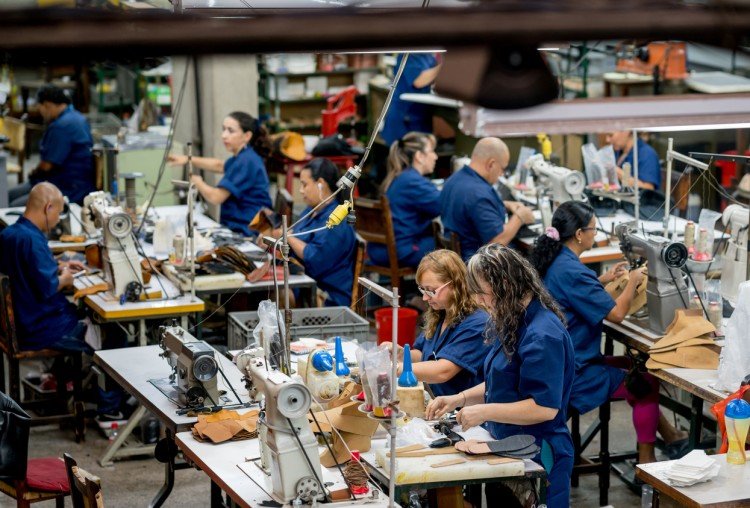The fashion industry is a dynamic and multifaceted global powerhouse that influences the way people dress, express themselves, and even perceive identity. With roots that stretch back centuries, fashion has evolved from handcrafted garments for royalty to a multibillion-dollar industry that caters to the masses, driven by trends, technology, sustainability, and cultural shifts.
The Scope of the Fashion Industry
The fashion industry encompasses a broad spectrum of activities including design, manufacturing, marketing, retailing, and media. It includes haute couture (high-end custom-made clothing), ready-to-wear collections, fast fashion, and luxury brands. It’s not just about clothes—it includes footwear, accessories, and even cosmetics.
Major fashion capitals such as Paris, Milan, New York, and London are considered trendsetters, hosting world-renowned fashion weeks that debut seasonal collections and inspire designers and consumers globally. Emerging cities like Tokyo, Shanghai, and Lagos are also rising in influence, contributing to the industry’s diversification.
Fashion as a Form of Expression
Fashion has always been a means of self-expression. What people wear reflects their personality, culture, beliefs, and social status. Over time, it has become a powerful tool for social commentary, activism, and identity. In recent decades, fashion has played a role in movements like body positivity, gender fluidity, and cultural inclusion.
Celebrities, influencers, and even politicians use fashion to make statements. The rise of social media has allowed individuals from all backgrounds to participate in shaping fashion trends, making it a more inclusive and interactive space.
Fast Fashion vs. Sustainable Fashion
One of the most significant developments in the fashion industry has been the rise of fast fashion. Companies like Zara, H&M, and Shein deliver the latest trends to consumers quickly and at low prices. This model relies on mass production and fast supply chains, enabling shoppers to update their wardrobes frequently without spending much.
However, fast fashion has faced criticism for promoting overconsumption, generating enormous textile waste, and depending on exploitative labor practices. In response, sustainable fashion has gained momentum. Brands are increasingly turning to eco-friendly materials, ethical manufacturing processes, and circular economy principles—where clothes are recycled, repurposed, or resold rather than discarded.
Consumers are also becoming more conscious. Thrift shopping, upcycling, and renting fashion items have become popular alternatives. Designers and companies are now being challenged to balance style with responsibility.
Technology in Fashion
Technology is revolutionizing the fashion industry in multiple ways:
-
E-commerce and Digital Platforms: Online shopping has transformed the retail experience, giving consumers access to global brands at their fingertips. Augmented reality (AR) allows virtual try-ons, while AI helps recommend styles based on customer preferences.
-
3D Printing and Smart Fabrics: Designers are experimenting with 3D-printed garments and smart textiles that can change color, monitor health, or adapt to temperature.
-
Sustainable Tech: Innovations like biodegradable fabrics, waterless dyeing techniques, and blockchain for supply chain transparency are making fashion more eco-friendly and traceable.
Technology is not only enhancing creativity but also helping tackle long-standing issues such as waste, inventory management, and consumer personalization.
Challenges Facing the Fashion Industry
Despite its glamour and influence, the fashion industry faces several pressing challenges:
-
Environmental Impact: The industry is one of the world’s largest polluters, responsible for significant carbon emissions, water pollution, and landfill waste.
-
Labor Concerns: Many garments are produced in factories where workers face poor conditions and low wages. Ethical sourcing and fair trade practices are gaining importance, but enforcement remains a challenge.
-
Cultural Appropriation: Designers and brands have come under fire for using elements of minority cultures without proper acknowledgment or respect. Cultural sensitivity is now an essential part of design and marketing.
-
Overproduction: Brands often produce more than they sell, leading to waste. Some even destroy unsold inventory to maintain brand exclusivity—an issue that has drawn widespread criticism.
The Future of Fashion
The future of fashion lies in adaptability, innovation, and responsibility. The next decade is likely to be shaped by:
-
Sustainable and ethical practices
-
Digital fashion shows and virtual wardrobes
-
Customization and made-to-order models
-
Collaboration between technology firms and designers
Young designers and startups are bringing fresh perspectives, challenging norms, and prioritizing both aesthetics and values. Education in fashion is also shifting focus toward ethics, digital skills, and environmental awareness.
Conclusion
The fashion industry remains one of the most captivating and influential sectors globally. It touches every aspect of human life—from how we express ourselves to how we interact with culture, technology, and the planet. While it faces real challenges, it also holds enormous potential to inspire change, empower communities, and promote creativity. As consumers, designers, and brands continue to push for progress, the fashion industry can become not only stylish but also sustainable and socially conscious.

